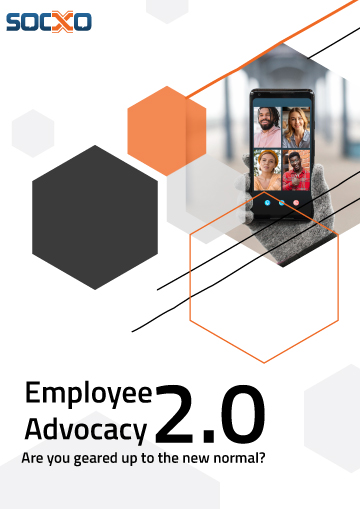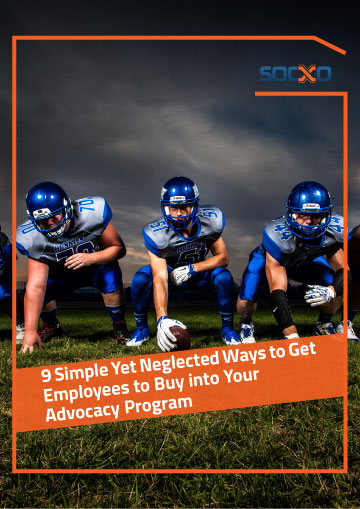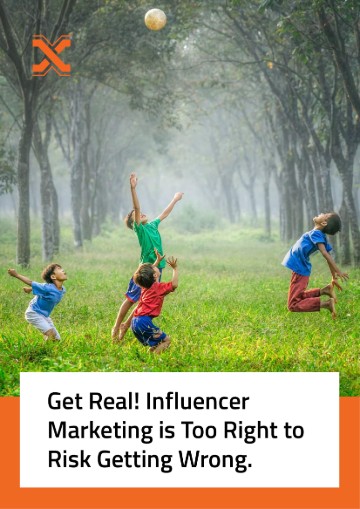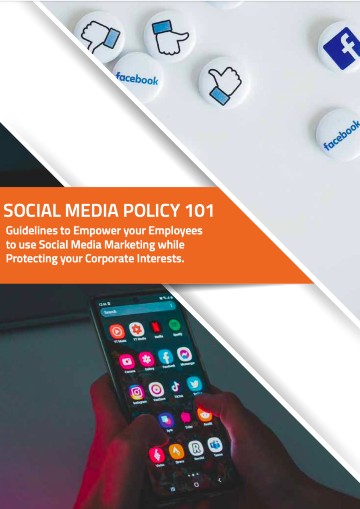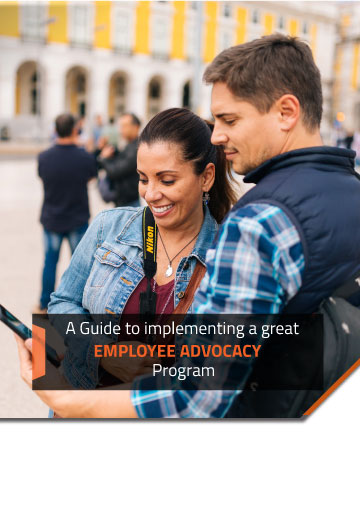
It doesn’t matter where you are on your advocacy journey – one thing you need to be downright sure about is how you’re going to measure the impact of your efforts. Enter the world of Brand Advocacy Metrics.
Simply put, if you can’t measure the impact of your advocacy program, you:
- Wouldn’t know whether or not you’re achieving your objectives
- Will lose your ability to adapt your program to meet changing requirements
- Struggle to estimate ROI
So guess what? You’ll have to get into the obvious the likes, shares, and comments, and also swing it in context of the objectives you are seeking to achieve through the program.
Focus on the data that matters – the numbers that conclusively prove that your effort has had a positive, measurable impact which you are seeking from the advocacy program, both from an internal perspective as well as external. Thus helping you make more data-driven, smarter decisions as you progress.
This article helps you connect your program to Brand Advocacy Metrics that matter to you as part of your overall marketing metrics.
Awareness Metrics
These metrics, which take into account your brand awareness, organic reach, and audience growth rate, help identify your current and potential audience. Brand Advocacy Metrics that lead you towards your marketing goals.
Brand awareness:
This is the attention that your brand gets across its advocates’ social media networks during a reporting period that’s long enough to yield statistically have relevant data. Attention may be expressed via a variety of metrics, including likes, shares, @mentions, and impressions. Reporting periods, too, are variable, and can last anywhere from a week to a quarter. How to track it is simple. All you have to do is finalize the metrics that you associate with brand awareness for your company, and then monitor them periodically for as long as you’ve decided to focus on building your brand awareness.
Organic reach:
This tells you the number of people who have seen your post since you published it. Importantly, while this metric stands out as one of the easiest to understand, what really sets it apart is that it’s actionable, given that it depends largely on post content and timing. Calculating it is easy, too – while the absolute number can just be read off the metric, the percentage can be calculated by dividing your reach by the total number of your followers and multiplying the result by 100. A small note – regardless of how tempting it is to pat yourselves on the back for a good number of views, likes, and mentions, unless you’re selling right out of LinkedIn or Facebook, remember to track the people who click through to your site.
Audience growth:
This is the measure of how quickly your brand gains followers on social media. As internet access increases, social media followings for brands is also bound to increase – what TrackMaven refers to as social media inflation. Note that this isn’t about how many net new followers you gained say last month. It’s how fast you gained them, and whether you did it quicker than your competitors did. How do you measure it? Couldn’t be simpler. Just calculate your net new followers by platform, divide the number by your total audience by platform, and multiply it by 100. Yes, you arrive at a percentage. Now do the same for your competitors!
Engagement metrics
These figures indicate the level of interaction your advocates are delivering. Engagement is directly proportional to overall profitability, since engaged users are more likely to make a purchase, turn into repeat customers, and also spread the word to other potential customers. These are key Brand Advocacy Metrics to gauge the network’s potential and relevance.
Average engagement:
Like the term in itself indicates, this is the average interaction that your post receives, based on the size of your audience. While the benchmark for this metric varies across platforms, the interpretation is pretty much the same – the higher the engagement, the higher the resonance of your content with your audience. The formula? You guessed it. Total number of engagement actions, divided by total audience (followers), multiplied by 100.
Another important metric to track in this regard is time spent on page, which measures the time a user spends on a web page. This in turn indicates the level of interest your content evokes in its readers. Time on page can easily be tracked via Google Analytics, following which you can calculate average session duration (average length of a session divided by total number of sessions over a specified period of time).
Pages per session:
This is another way to gauge user interest in your content. This metric tracks the number of unique page visits you receive per session – while a high reading indicates that your visitors visited more than one page on your website and truly engaged with it, when set off by a low session duration, it could indicate disinterest caused by irrelevant content or lack of a user-friendly design. To calculate the number of pages per session, again, you need to look no further than Google Analytics – from where you can find your total number of unique page visits, and divide it by your total number of sessions.
Virality: This gives you the number shares of your post, compared to its number of impressions over a specific reporting period. Just as with the other metrics listed, this one goes beyond the surface, and is about more than superficial likes. To measure virality, first measure your number of shares, and divide it by your impressions. Multiply by 100, and voila! You have your virality rate. Note that a post with more likes may still have a lower virality rate than a post that has fewer likes – which means that the latter fared far better than the former.
Conversion metrics
When engagement leads to conversion and overall profitability, it’s the happiest place to be. Thus, conversion metrics are a measure of how effective your awareness and engagement building initiatives are. You should be able to track the content journey right from share to goal conversion to know which Brand Advocates are delivering through the funnel. And that is possible only if you include these are part of your Brand Advocacy Metrics.
Conversion rate:
This is the percentage of your website visitors who complete positive actions, for instance, purchasing a solution, downloading a report, or filling in a form. The higher your conversion rate, the more effective your marketing tactics (and the more compelling your content!) in terms of getting your users to complete your end goals. Conversion rates can be calculated by social media channel, keyword, or at a broad overall level. To calculate conversion, track the total number of clicks and conversions generated by a post – the conversions divided by the clicks, times 100, will give you your conversion rate. Note that when it comes to a social media post, your conversion rate can be high despite low traffic; as it’s outcome-driven.
Click-through-rate (CTR):
This metric measures how frequently users click on your post’s call-to-action (CTA). Therefore, it lets you know how persuasive your offers are. To calculate your CTR, divide the number of CTA clicks by the number of post impressions, and multiply by 100. Remember to track both clicks and impressions during the same reporting period!
This metric measures how frequently users click on your post’s call-to-action (CTA). Therefore, it lets you know how persuasive your offers are. To calculate your CTR, divide the number of CTA clicks by the number of post impressions, and multiply by 100. Remember to track both clicks and impressions during the same reporting period!
Bounce rate:
This is the evil step-cousin of session duration – it’s the percentage of visitors who click a link in your post, only to exit in a hurry from the same page they landed on, without taking any action. Your bounce rate tells you how effective your content is, because if people are leaving without engaging or converting, your content isn’t doing what it’s supposed to. So while it’s important to monitor how engaged your users are, it’s equally important to know how unengaged they are. Which means that you can’t heave a sigh of relief as soon as your traffic metrics are up. If your bounce rate’s high too, your users feel that there’s nothing worth sticking around for
Google Analytics calculates your bounce rates for all your channels (social, organic, e-mail, etc.) – and also thoughtfully lines them up by pecking order for you, going from the lowest rate to the highest.
In order to measure your programs external influence well you need to integrate your social media accounts and your Google Analytics reports into your advocacy program. This is the only way you can measure the journey of content from share to reach to engagement to conversions.
You can tweak as much of your program as many times as you want to, to achieve your changing business objectives. So what are you waiting for? Ask for a free trial today!








